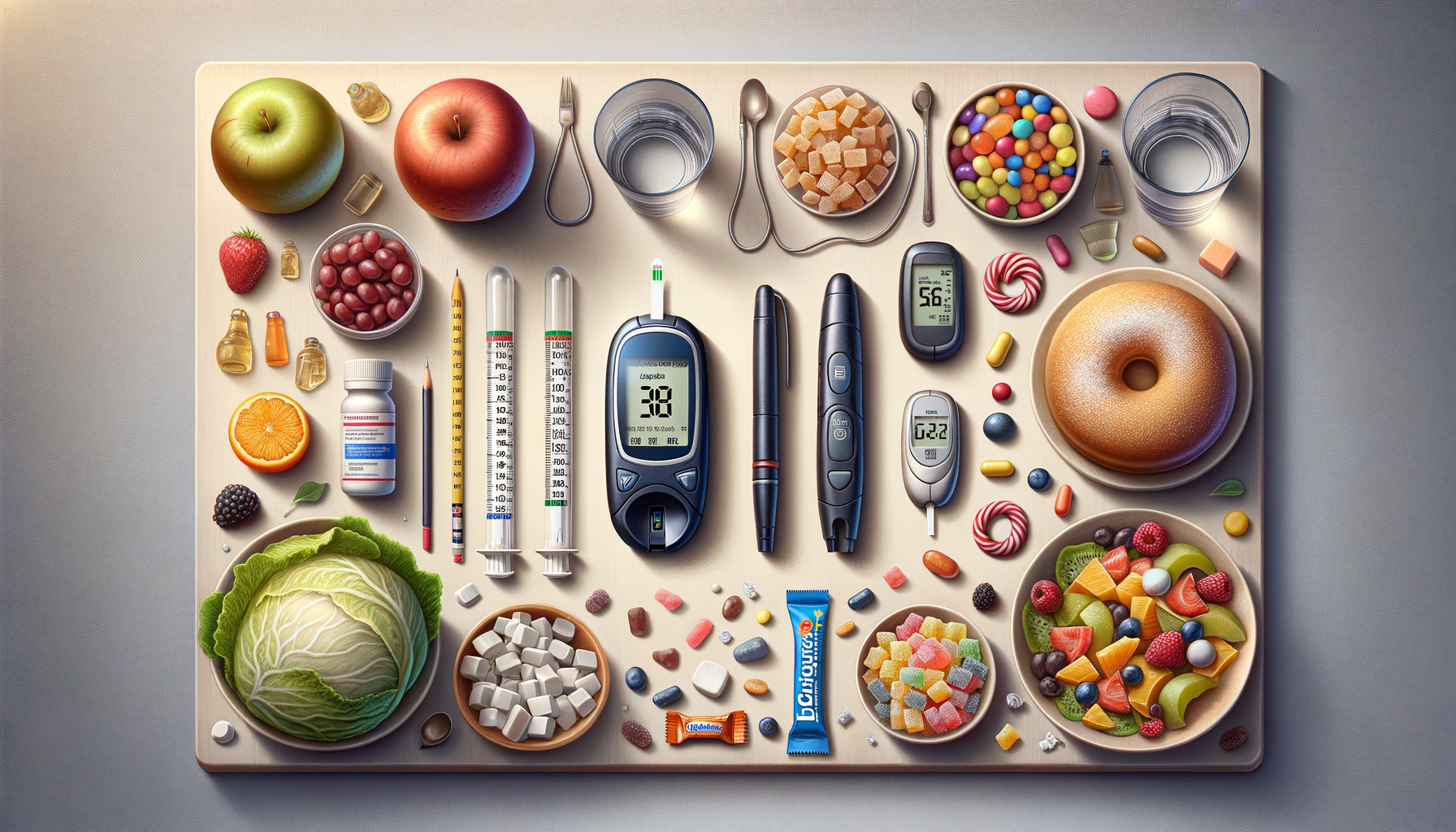
Navigating High and Low Blood Sugar: Recognizing the Signs and Effective Management
Understanding Blood Sugar Levels: The Basics
Blood sugar, or glucose, is a crucial source of energy for the body’s cells. It is derived from the food we eat and is transported through the bloodstream to be used for energy. Maintaining optimal blood sugar levels is essential for health and well-being. The normal range for fasting blood sugar is typically between 70 and 99 mg/dL, while post-meal levels should ideally be below 140 mg/dL.
When blood sugar levels deviate from these ranges, it can lead to health complications. Hyperglycemia refers to high blood sugar levels, often associated with diabetes, whereas hypoglycemia indicates low blood sugar levels, which can occur in both diabetic and non-diabetic individuals. Understanding these conditions is vital for effective management and prevention of complications.
Several factors influence blood sugar levels, including diet, physical activity, stress, and hormonal changes. Monitoring these levels regularly can help individuals make informed decisions about their lifestyle and treatment plans. By understanding the basics of blood sugar, individuals can take proactive steps toward maintaining balance and preventing adverse health outcomes.
The Impact of Diet on Blood Sugar Levels
Diet plays a pivotal role in managing blood sugar levels. Carbohydrates, proteins, and fats affect blood sugar differently, with carbohydrates having the most immediate impact. Foods high in refined sugars and simple carbohydrates can cause rapid spikes in blood sugar, while complex carbohydrates and fiber-rich foods result in a slower, more gradual increase.
Incorporating a balanced diet that includes a variety of nutrients can help maintain steady blood sugar levels. Some strategies include:
- Choosing whole grains over refined grains
- Including plenty of vegetables and fruits
- Opting for lean proteins and healthy fats
- Limiting sugary beverages and snacks
Meal timing and portion control are also essential. Eating smaller, more frequent meals can prevent large fluctuations in blood sugar. Additionally, staying hydrated and avoiding excessive alcohol consumption can contribute to better blood sugar management.
By making mindful dietary choices, individuals can significantly influence their blood sugar levels and reduce the risk of complications associated with imbalances.
Exercise and Its Role in Blood Sugar Management
Physical activity is a powerful tool in the management of blood sugar levels. Exercise helps muscles use glucose more efficiently, which can lower blood sugar levels and improve insulin sensitivity. Regular physical activity is beneficial for both those with diabetes and those seeking to maintain healthy blood sugar levels.
Different types of exercise have varying effects on blood sugar. Aerobic exercises, such as walking, jogging, or cycling, are effective in lowering blood sugar levels. Resistance training, including weight lifting, can also enhance insulin sensitivity and contribute to long-term blood sugar control.
Incorporating a combination of aerobic and resistance exercises into a weekly routine can provide comprehensive benefits. It’s recommended to aim for at least 150 minutes of moderate-intensity exercise per week. However, it’s important to monitor blood sugar levels before and after exercise, as physical activity can sometimes lead to hypoglycemia, especially in individuals taking insulin or other glucose-lowering medications.
By integrating regular exercise into their lifestyle, individuals can achieve better blood sugar control and improve their overall health.
Recognizing the Signs of Blood Sugar Imbalance
Being able to recognize the signs of blood sugar imbalance is crucial for timely intervention and management. Symptoms of high blood sugar (hyperglycemia) can include increased thirst, frequent urination, fatigue, and blurred vision. If left unmanaged, hyperglycemia can lead to more severe complications, such as diabetic ketoacidosis.
On the other hand, low blood sugar (hypoglycemia) can manifest as shakiness, sweating, confusion, irritability, and in severe cases, loss of consciousness. Immediate treatment is necessary to prevent serious health risks.
Regular monitoring of blood sugar levels using a glucose meter or continuous glucose monitor can help individuals detect imbalances early. Keeping a record of blood sugar readings and any associated symptoms can provide valuable insights for healthcare providers to adjust treatment plans accordingly.
By understanding and identifying the signs of blood sugar imbalance, individuals can take proactive steps to manage their condition effectively and avoid potential complications.
Strategies for Long-Term Blood Sugar Management
Long-term blood sugar management requires a comprehensive approach that includes lifestyle modifications, regular monitoring, and, in some cases, medication. Setting realistic goals and working closely with healthcare professionals can lead to successful outcomes.
Key strategies for long-term management include:
- Adhering to a balanced diet and regular exercise routine
- Monitoring blood sugar levels consistently
- Managing stress through relaxation techniques and adequate sleep
- Collaborating with healthcare providers to adjust medications as needed
Education and self-awareness are also vital components. Understanding how different factors affect blood sugar levels empowers individuals to make informed decisions about their health. Support from family, friends, and support groups can provide encouragement and accountability.
By implementing these strategies, individuals can achieve and maintain optimal blood sugar levels, enhancing their quality of life and reducing the risk of complications associated with blood sugar imbalances.

